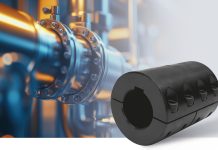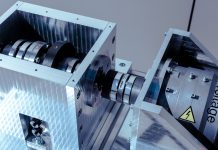Fluke reveals four simple steps to preventing costly motor failure
Fluke, a global technology manufacturer of compact, professional electronic test and measurement tools and software, shares their four steps to prevent costly motor failures. Motor control systems used in critical manufacturing processes are becoming increasingly complex, which makes it more crucial than ever to keep them at peak performance. Equipment failure is expensive, whether due to the cost of replacement parts or lost production.
Arming maintenance engineers and technicians with the right knowledge to prioritize workloads and run efficient and effective preventive maintenance programs can help avoid motor failures and reduce overall downtime costs.
It is important to consider mechanical and electrical issues when troubleshooting motor failure. Here are four steps to preventing failures in motor drives and rotating components:
1. Capture initial asset condition data and specifications at installation
The first step in preventing motor failure is to capture critical information on the asset – including operating condition, machine specifications, and performance tolerance ranges – at installation. Having data that confirms how the asset is supposed to run makes it easier to detect any variations from the original installation regular preventive maintenance checks are conducted.
Proper installation lays the foundation for the asset’s life and can extend that life. Before getting the asset up and running, check for issues such as:
- Soft foot: the mounting feet of a motor are uneven
- Pipe strain: stresses and forces acting on the rest of the equipment transfer backward into the motor
- Shaft voltage: exceeding the insulating capacity of the bearing grease causes flashover currents to the outer bearing
- Motor winding insulation resistance
- Power consumption, harmonics and electrical unbalance
- Overall vibration level
2. Establish a preventive maintenance schedule and stick to it
Once the initial asset condition data has been captured, it is advisable to set up a regular preventive maintenance schedule to track the operating conditions of the motors in a facility. On each preventive maintenance round a comparison of the new measurements to the motor specifications and tolerances that were captured at installation can be made to identify any anomalies. Add thermal imaging to routine testing to capture the heat output of motors and assets. High sensitivity thermal imagers capture minute temperature differences to indicate that a motor is running too hot or too cold helping maintenance professionals to find the root cause.

Mechanical issues will occur over time however, assets can last longer if a regular preventive maintenance program is followed, and mechanical issues are fixed early. Some common mechanical issues include:
- Misalignment: the motor drive shaft is not in alignment with the load
- Shaft imbalance: the centre of a rotating part does not lie on the rotational axis
- Shaft looseness: excessive clearance between rotating and stationary elements inside a motor
- Bearing wear: surfaces sliding against each other without enough lubrication to keep them apart
Many breakdowns that arise from mechanical issues show up first as vibration. Incorporating a vibration sensor system into a preventive maintenance schedule can help to catch many problems before they lead to motor failure.
3. Store and record individual measurements to establish a baseline
Create a baseline of an assets’ performance by saving the measurements and thermal images taken during a preventive maintenance routine. Any change in the trend line of more than 10% to 20% should be investigated to identify the underlying factors. The percent change in the trend line that warrants further investigation should be based on system’s required performance or the asset’s criticality.
Since variable frequency drives (VFD) take one wave shape and convert it to another, establishing a baseline for running motors will allow maintenance technicians to see when the output changes. Using a true-RMS multimeter and a portable oscilloscope with a bandwidth of at least 200 MHz can diagnose problems related to VFDs. Some of these oscilloscopes even offer guided test setups and automated drive measurements to simplify complex motor-drive troubleshooting and provide reliable, repeatable results. It will be possible to quickly detect problems such as:
- Reflections on drive output PWM signals: impedance mismatch between the source and load
- Sigma current: stray currents circulating in a system
- Operational overloads: a motor under excessive load
Portable oscilloscopes operating on a lower frequency range and thus less expensive can validate wave shapes and help technicians to decide how to repair a VFD. As with many other asset repairs, it’s more cost effective to catch and repair issues in the early stage than to run to failure and need to replace the whole asset or system.
4. Run a trend analysis
Once a baseline has been established, it’s important to continue tracking and recording measurements regularly. Storing data and creating a trend analysis can help to diagnose many power-quality-based problems such as:
- Transient voltage: high voltage peaks that are very short in time that come with switching loads.
- Voltage and current imbalance: differences between the voltage or current phase magnitudes or angle
- Harmonic distortion: unwanted additional sources of high-frequency AC voltage or current supplying energy to the motor windings.
These issues should be validated with power quality analyzers that are capable of capturing the transients or high frequent harmonics. Based on the results, external intervention may be required to repair the problem or even install additional electric equipment like active harmonics filters.
Be proactive to avoid having to be reactive

Markus Bakker, Field Application Engineer at Fluke Corporation said: “Equipping your maintenance engineers and technicians with the proper tools, knowledge, and data will enable them to identify signs of motor problems before they become serious. Following the four steps described above will help them to catch issues before a motor fails, which will help avoid the cost of asset replacement and downtime.”
For more information about the new clamp meter, go to: https://www.fluke.com/en-gb/learn/blog



